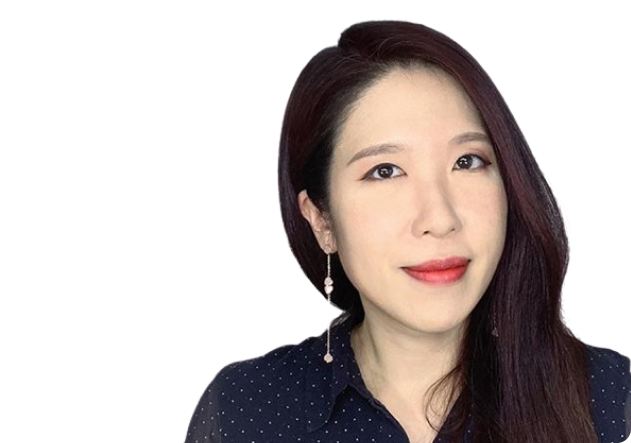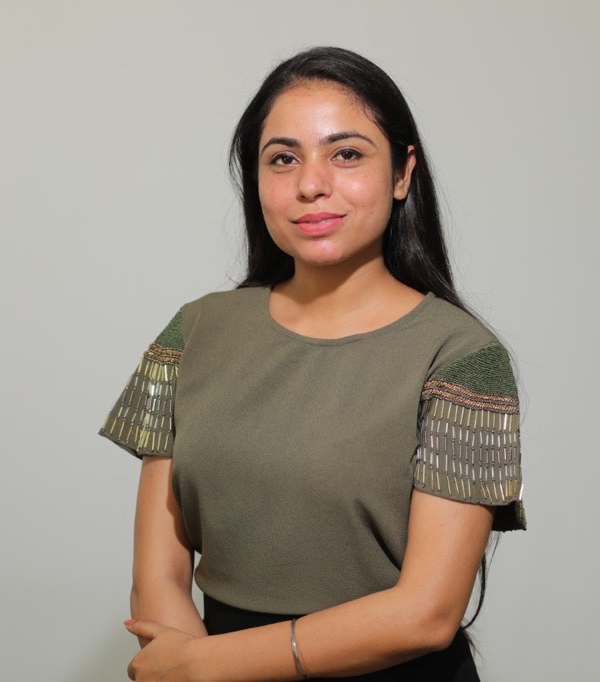What to expect from AI in 2023
AI is emerging and evolving faster than ever. AI is entering in a promising era, beginning in 2023, thanks to vast improvements in processing power and computational efficiency.",

Soo Yun Kim experiences have led her to present at a variety of design conferences, organizations, meetups, and companies, including UXPA, AHFE, Adobe, BKProductDesign, and Girls Who Code for STEM.
As a founding member of Triller, she launched a social video-making application with over 250 million installs. In the past, she has worked with various companies and clients, including Nickelodeon, MTV Networks, USA Today, The Weather Company, Chanel, Google, IBM Michael Kors, J.Crew, and Godiva.
She has also been a guest speaker at multiple universities, including Binghamton University, Fashion Institute of Technology, The New School, Pratt Institute, University of Connecticut, Cornell University, Colorado State University, Union College and the University of Florida.
Let us quickly get to our expert's point of view.
Ans : My definition of Design is a communication tool that represents visual aesthetics and experience between users and products. And I think a good design gives users a good experience while interacting with it, making them feel confident, comfortable, and easy to use. It is important to have a good design because a design is supposed to work with people. I believe a designer’s role is to find and make a design that minimizes the user’s problems by leveraging feedback and data because a designer should always be designing from the user’s perspective.
Ans : I like to be involved in every stage, from scratch to the end design. I begin with researching and discovering issues that users are having problems with and discuss those issues with the team to set possible solutions. Next, I sketch all the ideas through brainstorming & storyboarding and create a foundation of the layouts through low fidelity & high fidelity wireframing. And then, I lead all design processes that deliver user value through user scenario, concept design, UI UX design, and prototype, which determines the user’s product experience. And then, all of the steps get repeated by collecting feedback from users to reach the best design for the users. The UX design role is like wearing many hats. Rather than repeating a single part of the design process, I actively oversee the entire process, trying to solve problems through teamwork and intervening in as many parts as possible.
Ans : Designing requires a high level of concentration. I investigated several methods to optimize my flow state both physically and mentally. The first method is to increase productivity by saving energy. For example, choosing a fast and efficient design tool when designing or equipping my office with the latest tech supply so that I can work faster. Another method is to select a job that I can be satisfied with, something that I love to do, and something challenging. I tend to get lazy when it comes to something I’m not so eager to do. So I try to find things that I want to do, something that can keep me busy, things that I like. Also, I create an environment where I can enjoy myself while working. Finally, I like to set clear goals, both long-term and short-term goals—the more specific and detailed the task, the better. Then complete the goals one after another, and try completing them individually. By accomplishing the goals I set for myself, I gain control and a sense of accomplishment, making me focus better on my work.
Ans : Both imagination and intellect are critical to a design because we can’t design with just one aspect. Knowledge can sometimes be limited because of the data we can get with limited time and resources, but imagination stimulates the brain, and evolution follows. However, if only imagination is used to design, the result can be biased. So I study unpredictable things and build up on my knowledge, researching and collecting the accurate amount of data and designing by adding imagination on top of that.
Ans : Feedback is crucial to making a successful product, especially for UX designers like me, because we design for a better user experience. In order to design for a better user experience, you first need to figure out what users like and dislike. Many UX designers, including myself, observe users' patterns, discover new things, and discuss the field. So quality feedback and exchange of opinions that occur in the process greatly influence the UX quality.
There is not only just users' feedback but also feedback from fellow designers, co-workers, team members, etc. When I work with a team, I sometimes overlook something. For example, when we share our opinions, everyone has "I like this" or "I don't like that" kind of conversation. However, I try not to make a conclusion with only my or our team's views. Instead, I try to be in the user's perspective to see things, think, and design. So, I listen to as many different people's opinions as possible when I do design work.
Through critique meetings with designers, I hear what needs to be fixed and what needs to be improved. And with developers, I listen to opinions about whether the product is feasible and functional. Also, I check for any problems experiencing the outcome through various usability testing. Finally, even after the design is released, I constantly review users' feedback and satisfaction rate and find areas for improvement. That's how I make my designs even better.
Ans : I am inspired by everyday life. There are so many exciting things in NY. Mass transit, billboards in Time Square, I like to watch kiosks, ATMs, vending machines, and transportation systems because I am interested in UX design. I am curiously watching those installations. Also, I have launched many great mobile apps as a designer. So I also get inspired by using many different apps from various platforms and devices.
Ans : In the future, the design field will have more in demand than now and will become a profession with good prospects. When the era of the '4th Industrial Revolution' led by artificial intelligence, robotics, IoT, self-driving vehicles, nanotechnology, and 3D printing comes, the design field will work directly and indirectly with them. 3D, AR, and VR are already drawing attention. In addition, it is pioneering various fields by applying the latest technologies and methods to the UX of autonomous vehicles.
These days, I get a lot of questions about whether AI could replace designers and whether jobs in the design field would disappear. And I tell people that I don't believe AI would replace designers because even designing a small button requires a lot of creativity and thinking from many people and their work.
Instead, the design will be active in various fields through collaboration with artificial intelligence and advanced technologies based on big data in the future. To do so, designers should strive to create new values with interest in various industries rather than simply being visualization experts.
Ans : I love to challenge myself in life, and it inspires me. When you are most passionate and constantly challenging, the goal becomes clear, and many ideas are constantly generated to achieve it. For me, it's inspiring to take on challenges and try to move to the next level.
For example, preparing for my next promotion, or taking on a new project takes a lot of thought and effort to prepare for these challenges. Sometimes when things get stale or too predictable, I prepare to challenge myself and think outside of the box rather than trying to settle down in my comfort zone. My challenges generate new ideas and excitement every time, inspiring me every time.
Ans : We are experiencing a wave of layoffs on a global scale in the tech industry because of the economic circumstances. Many designers have lost their jobs. Many entry-level designers who have just graduated from college struggle to find jobs. I want to say to them, you might have lost your job, but don't lose your passion as a designer. Pursue your goals, then opportunity will knock on your door.
I hope the design community will recognize this rapidly changing situation and find opportunities for entry-level designers who need help building their careers and designers looking for jobs. Create a community for each group, arrange a meeting place to understand each other's situation, or hold frequent events such as workshops or talks to help people find jobs. Also, it would be an excellent way to have an event where mentors and mentees can meet so that advice or guidance on design careers can be obtained through mentorship.

Senior Consultant
Leave your details so we can contact you back.